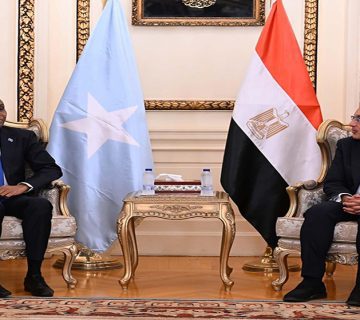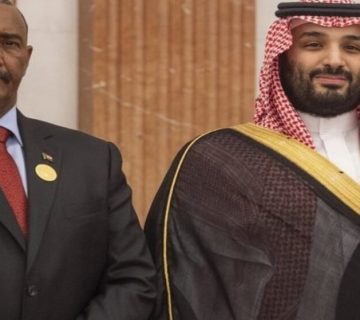Since 2007, international forces led by the Africa Union Mission in Somalia (AMISOM) have been providing security, and supporting counter-terrorism, and peace building efforts in Mogadishu and other major cities and towns in Somalia. However, over the years, its militarized approach and efforts have faced setbacks and muted, as al Shabab continues its potent threat and attacks in Somalia and the region. United Nations Security Council (UNSC) unanimously adopted Resolution 2472 (2019), which extended the mandate of AMISOM and the reduction of troops by February 28, 2020. The reduction of AMSIOM troops, and possible withdrawal after 2020, is in line with the UNSC plan to reduce uniformed personnel to 1,000 and ensure gradual transfer of responsibilities to Somalia security forces. AMISOM’s proposed withdrawal gives a picture that military measures alone cannot pacify and stabilize Somalia. Somalia’s stability can be enhanced through nationwide negotiations, dialogues, and power-sharing with other political forces fractured along clan lines.
Stabilization Efforts
AMISOM, with financial and tactical training support from the European Union (EU), United Nations (UN), United States (US) and other regional, international, and state actors, have implemented peace frameworks to stabilize Somalia and restored its institutions, to a some extent. AMISOM’s plan for stabilizing Somalia is that territories that have been recovered should be stabilized for easy transition to government control, and to prevent the possible renew of control by al Shabab.
Of note, AMISOM did not begin (in 2007) with the stabilization agenda, but rather to protect the Somalia Transitional Federal Government (TFG). However, it is in 2011 that AMISOM began to take on various stabilization tasks as a result of its military success in urban warfare against al Shabab. The AU thought there is need to support the stabilization of the capital city of Mogadishu, and beyond it. In the same year, AMISOM began reinforcing the police and the civilian component of the AMISOM mission. It gradually transformed from purely ‘military’ into a more multidimensional operation. Presently, AMISOM mission redefines stabilization in Somalia as undertakings to facilitate early recovery of population, cities and institutions in a district recovered from al Shabab.
Stabilization Costs and Challenges
For more than a decade, international donors and states have spent millions of dollars to support the military stabilization efforts in Somalia. In 2017, according to the World Bank and UN, stabilization project in Somalia cost about USD 378.1 million in 2017, USD 345.6 million in 2016. Akinoloa Olojo, an expert on violent extremism and terrorism, has stated that, aside from international financial support, Horn of Africa countries (Djibouti, Ethiopia, Kenya, and Uganda) have relied heavily on militarized approach and support to AMISOM in an attempt to address terrorism and stabilize Somalia. At its peak, over 22,000 uniformed personnel were deployed to Somalia under the auspices of AMISOM, at an annual cost of about USD 1 billion.
From mid-2013, AMISOM has been under a series of strategic and operational reviews, and UNSC has continuously requested periodic assessments of AMISOM operations. All of this was aimed at strengthening AMISOM mission. As a result, from early 2014, it has conducted major successful operations with the core objective of defeating al Shabab in Somalia. In an attempt to implement stabilization strategy in Somalia, AMISOM continued to confront political and operational challenges that badly hindered its ability to achieve this goal.
The prospects of AMISOM have weakened as a result, of inter alia, over-securitized responses, fragmented command and control, inadequate logistical support, and failure to degrade al Shabab fighting ability or provide security to the local population. AMISOM’s efforts in containing and eliminating al Shabab has witnessed several setbacks. The 2018 Global Terrorism Index (GTI) ranked Somalia the sixth most terror-prone country. Al Shabab terrorist activity is scattered around and continue to grow in southern and eastern regions of Bari, Shabelle, and northern Puntland. Al Shabab group has cast a dark shadow over Somalia with its quest for a united Somalia, extending to all other Somali-inhabited areas in East Africa under one Islamic Caliphate, the group continues to hold the significant organization and territorial capacity against Somalia security forces and AMISOM forces.
Most international actors have now shifted their focus on post-AMISOM Somalia where the country’s security forces would be in full control of the security in the country. The transition rhetoric was based on two key factors. First, President Mohammed Abdullahi Mohammed (Farmaajo) administration has, over time, shown a strong commitment to assume security responsibility. Secondly, the AU, international actors and regional stakeholders (troop-contributing countries) strongly recommend a strategic exit plan for AMISOM. If fully implemented, the transition could lay the foundations for the future of Somalia.
Rethinking AMISOM Stabilization in Somalia
For more than a decade, with financial and military support from international donors, states, and regional actors for the stabilization of Somalia. The debates on Somalia remains that the risk of an exacerbating political conflict, dire security implications if AMISOM withdraws its troops and an elongated humanitarian crisis. Jules Swinkels, a Research Fellow at the HORN International Institute for Strategic Studies supports this claim by arguing that AMISOM exist plan does not address the critical situation in Somalia. As security forces are not ready to take the responsibility of AMISOM in providing security and stability, and the political atmosphere is still unpredictable. It raises questions of the militarized approach of stabilization efforts in Somalia, and lessons for other contexts where such approach of stabilization becomes a mirage. Asserting the situation, the issue could be described ‘mopping the wet floor while overlooking the points of the leaking roof unattended to.’
Just as the individual who has not been able to keep the floor dry whenever it rains, in Mogadishu, because of the failure to mend the leaking roof, AMSIOM stabilization mission in Somalia has for several years not been able to secure sustainable peace in Somalia due to the focus on territorial fight against al Shabab and countering violent extremism. In as much as counter-insurgency and counter-terrorism is a stabilization approach, this is just one approach of stabilization. Drivers of conflict and peace spoilers in Somalia are also political and clan-based, and neglecting these perspectives in stabilization efforts in Somalia would weaken efforts in the long term. AMSIOM has struggled to address the fundamental issues that created the conflict and the consequences thereof.
It is important for all actors to restore stability in regions where al Shabab is seen as an ‘effective provider’ of state services and law to the regions, and where AMISOM’s counter-terrorism approach has produced little or no result. AMISOM, international, regional, and state actors need to reconsider the stabilization as a means of restructuring, paving the way for accountability and rule of law, rather than just the absence or mitigation of conflict. Actors should also explore non-military engagement with the militant group by, for instance, using a local third party mediation approach that includes local clan heads, family members, Islamic cleric, women and youth groups, civil society organizations (CSOs) among others.
As AMISOM exit from Somalia in 2020 draws closer, there is need for a security sector reform (SSR). The exit plan should be backed with a sustainable and affordable plan to reform and finance the security sector. This is a key transition element and strategy, as the actual number of active SNA is likely to be lower than 26,000. Implementing a transition plan, or fighting al Shabab in Somalia without better equipment and training for a more profound security system would be hazardous for the future stabilization prospects of Somalia.
Tonye Marclint Ebiede, Research Department, the HORN Institute.
Photo: SNA and AMISOM troops in joint operation (Photo Credit EDGE APO)



